Welcome to Part 2! Come along for a visit to Guandu Temple, and get a little Zen at Linji Huguo Temple; then visit Yinhe Cave, Songshan Tianbao Temple, and Xingtian Temple. I think I’ll save a slideshow of the Bangka Quinshan Celebration for another post. Here we go…
Guandu Temple

The first time “I laid eyes” on Guandu Temple was passing by on a bicycle ride to Tamsui. That particular day, I was on a mission to get to Tamsui before sunset, but stopped to take in the sight and some photos. As I cycled on following the bend of the Keelung River, I noticed what seemed to be another temple carved into the rock… I knew then I had to come back to visit both.

Some weeks later, meeting up with my friend Vanida to explore the area, we discovered that what looked like two temples was part of one magnificent temple, connected by tunnels filled with statues and carved out of the hill. To get to Guandu, head north on the MRT Red line and exit at Guandu station. It’s a lovely walk or bike ride through some old streets and alleys to get to the temple.
Guandu Temple is definitely one of my favorite temples in the Taipei area. It dates back to 1712 and sits on the site of a place of worship dating back to 1661. This makes it one of Taipei’s oldest temples and the oldest Matsu Temple in Northern Taiwan. “Matsu” is a lady turned folklore legend and one of the biggest deities in Taiwan who does not fall within the Buddhist or Taoist religion. There are over 3000 temples dedicated to her! The Matsu (or Mazu) faith originates in southern China’s Fujian Province. Taiwan’s take on Matsu has evolved from a young maiden to a benevolent maternal figure who watches over the health of all people in Taiwan.

As mentioned, the temple sits next to the Keelung River, but faces a tributary to it. It is built on and into a hill, and on my bike ride was noticeable from afar. We climbed staircases leading to a number of levels, all offering stunning views of temple buildings, gardens, the river and in the distance Taipei City. Don’t miss visiting the gardens above and of course the afore-mentioned tunnel leading through the hill to a shrine featuring a magnificent Thousand Armed Guanyin Statue. Excellent views of the plaza below (with hundreds of pigeons and pavement art), Guandu bridge across the river and Yinghan Peak are included. Entrance is free, just pay your respect to the divine beings…
After your visit to Guandu Temple, you may want to cycle on to Tamsui for sunset and the night market – as we did 🙂
Linji Huguo Temple
I had taken the Red Line (MRT) many times past Yuanshan station on my way to Shilin or Tamsui, and each time I noticed a yellow building complex that looks like a monastery or such. It’s actually a Chan Buddhist temple which conceals in its courtyard a beautiful Japanese wooden shrine, dating back to the Japanese colonial period in Taiwan. This may be the oldest remaining wooden structure and the only Zen Temple in Taipei. At the entrance sits a beautiful wooden bell tower – occupied by pigeons when I visited. 🙂 It’s a quiet place, simple and so beautiful in its simplicity. A set of staircases behind the hall leads to a terrace …. and onward to Yuanshan Geological site and more…
While at Yuanshan Park – after visiting the temple – walk on to the Yuanshan Geological site, the Fine Arts Park, the Rose Garden and the Lin An Tai Historical House and Museum (which I will share about in another post). That’s a day’s outing!
Yinghe Cave or Silver Stream Cave and Waterfall I visited in November 2020 (see my previous post…). The Yinhe Cave Hiking Trail is a fairly easy hike if you are taking the route from the Maokong Gondola; and if you’re good with many stairs uphill approaching from Xindian. Either way, the hike culminates in a spectacular view of a temple, or rather shrine, built right into a cliff face, next to a waterfall, and covered with vegetation. 銀 means silver and 河 means river or stream, and taken together they can mean “Milky Way” – so we have “Silver Stream Cave” or “Milky Way Cave;” the name appears to reference the way the waterfall strikes a slab of rock halfway down the cliff, just in front of the cave, resulting in a fine mist. Built into the recess of this cave is a small temple, humble yet wonderfully atmospheric. The path through the temple takes you through a few shrine rooms and caves, with a statue of Lu Dongbin at the top.
Songshan Tianbao Temple
This is one of the last temples I visited before my departure from Taiwan – actually by chance, not planned – on a hike in the foothills of eastern Taipei. Kaya and I went to Elephant mountain, I think the first hike we did in February 2020 during my first visit to Taiwan. So fitting it was the last hike on this trip. Tianbao Temple is in the Four Beasts mountain area, which is a popular hiking destination for city and Taipei 101 views offered from Elephant Mountain. The three other beast mountains (Lion, Leopard, and Tiger) see far fewer hikers, but also offer great views and less crowds! Tianbao Temple is located roughly between Elephant and Leopard mountains. It was built in the 1960s. Not many people come here to worship on a daily basis anymore. I so enjoyed just coming upon it set in the jungle on the mountain side. The temple grounds are spread out along the trails with numerous statues and places of worship built into the cliff walls. In my books definitely a place worth a visit!
Xingtian Temple (Hsing Tian Kong)
I visited Xingtian Temple in late October 2020 with my friend Tilasmi – a day packed visiting and enjoying the best coffee, a great foot massage, and cycling explorations of Taipei. The temple is located in the business district downtown, also known as Hsing Tian Kong Temple, where the Taoist God of War is worshipped. Every day, from 11:20am to 10pm, crowds shuffle forward in patient lines, waiting, one by one, to receive a cure or a blessing from a volunteer temple priestess. I joined the line to experience the shoujing ritual.

The priestess took my name, and then, with a few esoteric gestures and a flick of the incense stick, cast her spells. Honestly, I had no idea what was going on and what it might be good for, but it just felt right to join. The temple was certainly one of the busiest places of worship I visited – one of the reasons I took so few photos. I only went this once and can certainly see myself going back to explore more.
Xingtian temple has a large inner courtyard buzzing with people worshipping and multiple rows of tables on the sides where elderly devotees sit and read mantras from books while counting prayer beads. Notice the simpler architecture pointing to the Confucian origins – Buddhism and Taoism were included over time. Apparently, there is an underground Aisle of Fortune Tellers below Minquan West Road near the temple’s main entrance – which I missed as I didn’t know about it. They say, if you get your fortune told you may be surprised at how accurate it is! Next time 🙂
Bangka Quinshan Celebration will be covered in the next post. (Lately, the weather has been sunny and inviting me to garden and other outdoor adventures, so not much time on the computer…).
Thanks for visiting! I hope you find inspiration on my pages.




















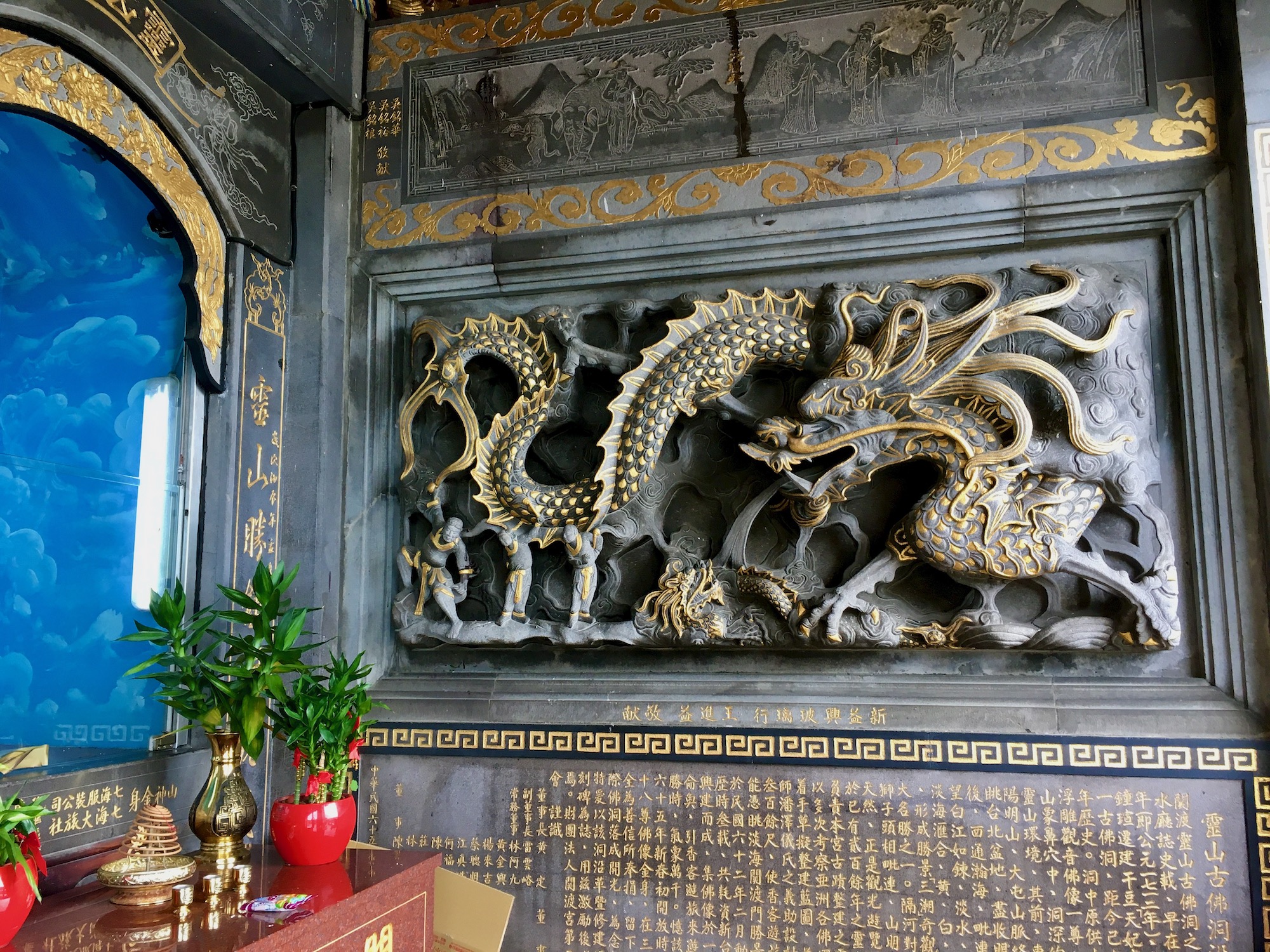



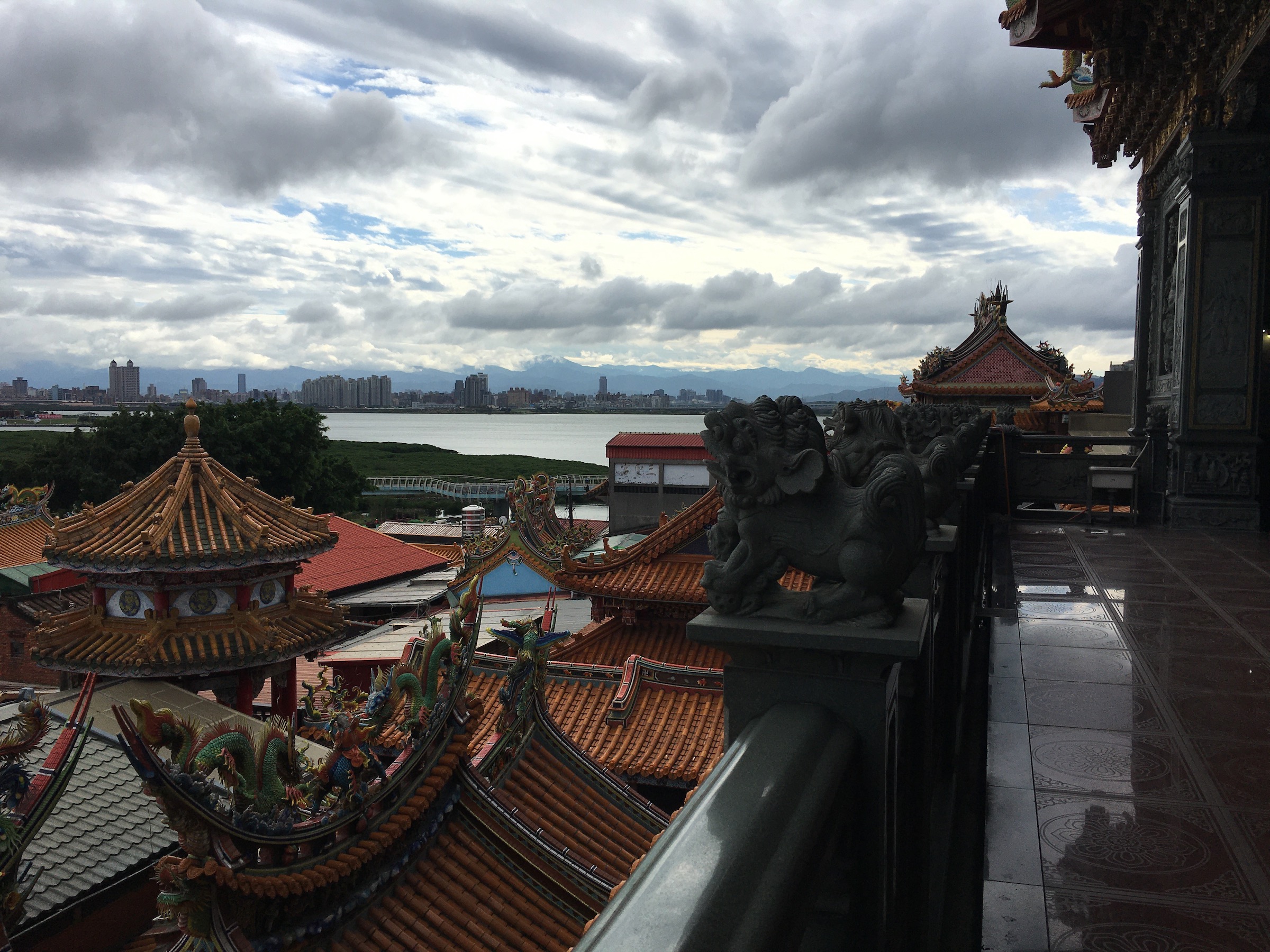



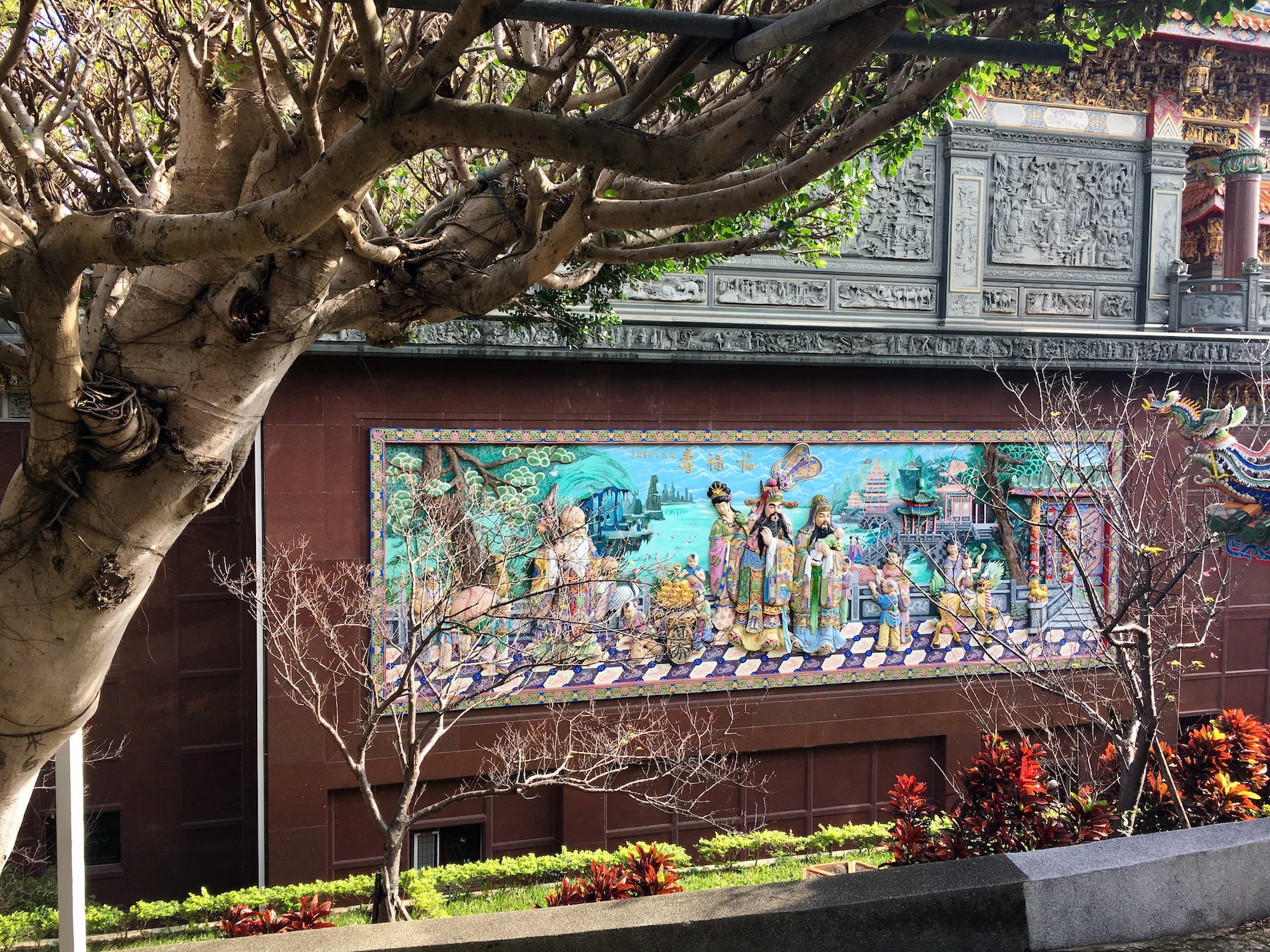










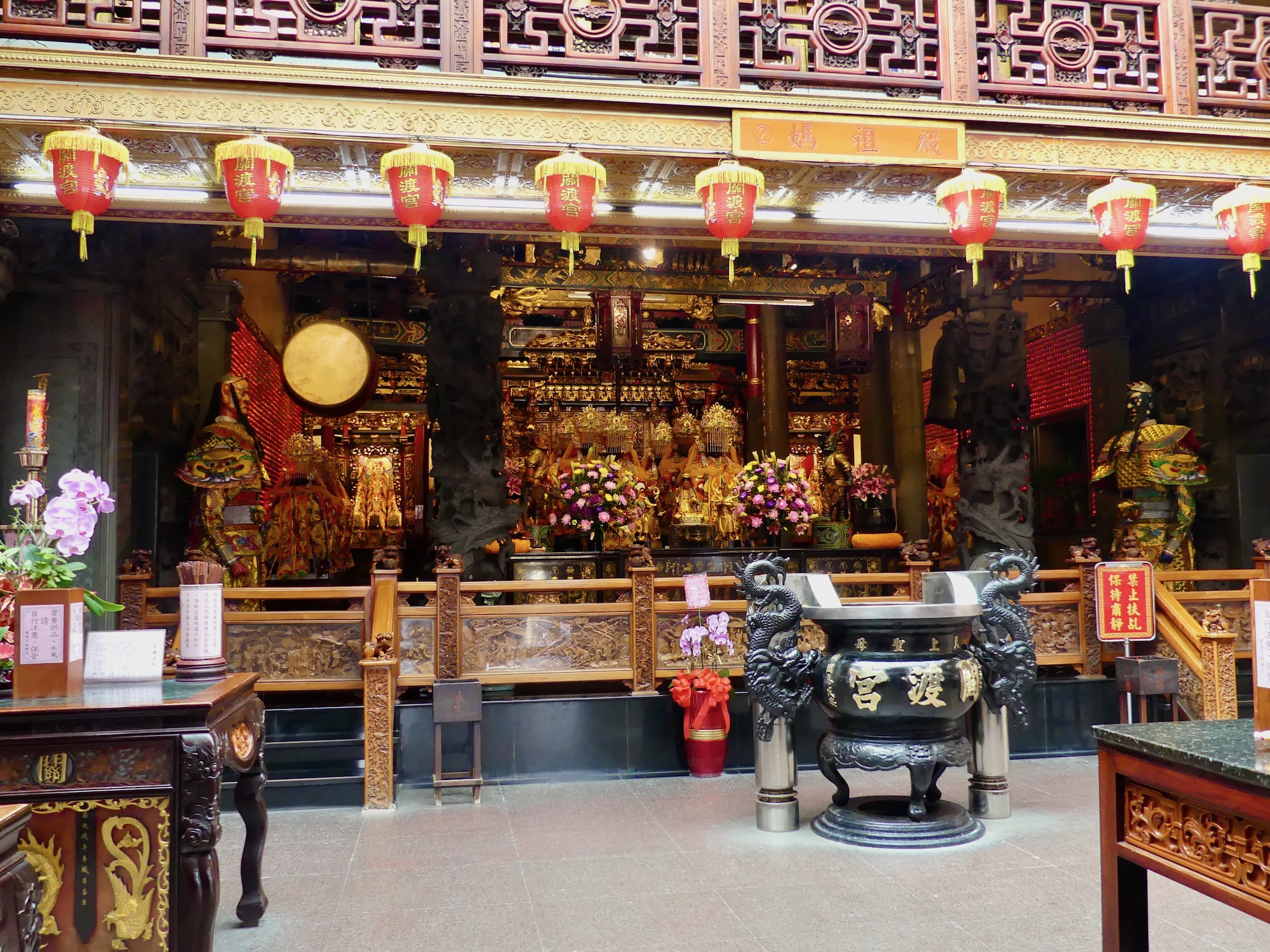



























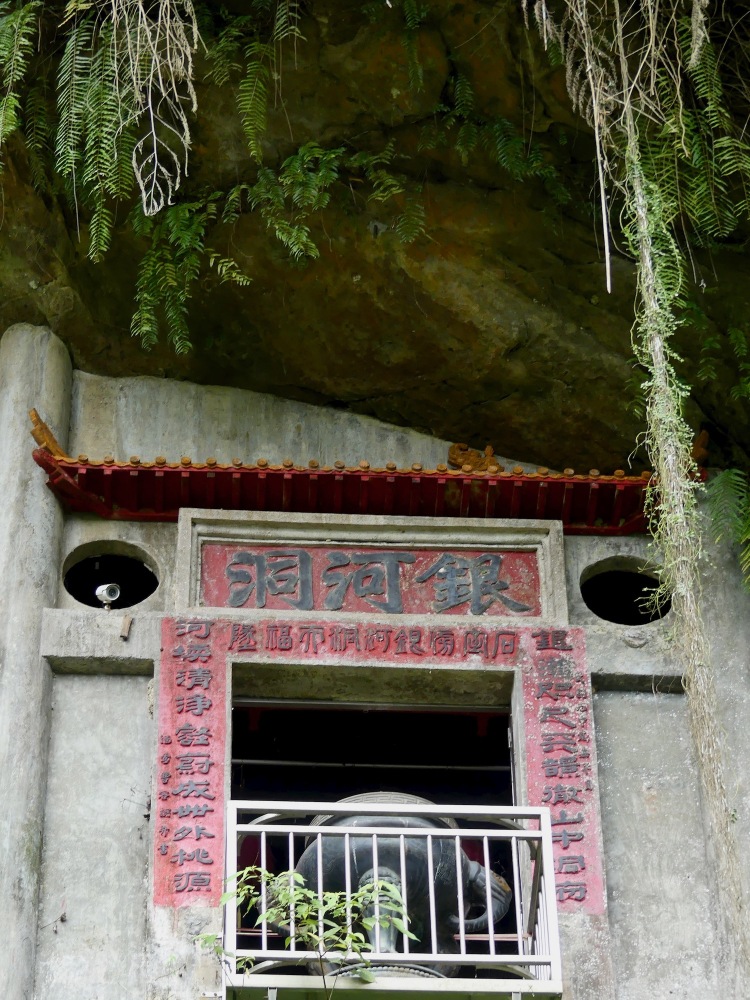



















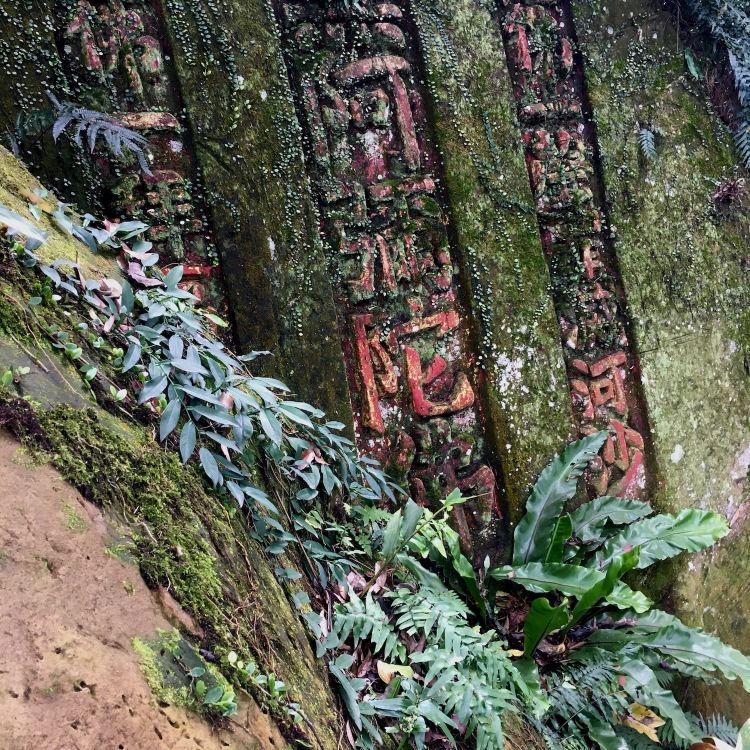






















a wonderful travel guide Surati!
LikeLiked by 1 person
Thank you Colleen 🙂
LikeLike
This was fabulous. I definitely need to see the Guandu Temple if nothing else, and the one in the cave looks pretty cool too. Out of all these I think my fave photo has to be the pigeons on the grey roof, so camouflaged they look like part of the roof.
Alison
LikeLiked by 1 person
Good choices. Only 15,000 temples or so to go in Taiwan… LOL. I actually went on overload at some point and didn’t take any more photos. Though I’m sure there are countless other gems to be found.
Surati
LikeLiked by 1 person